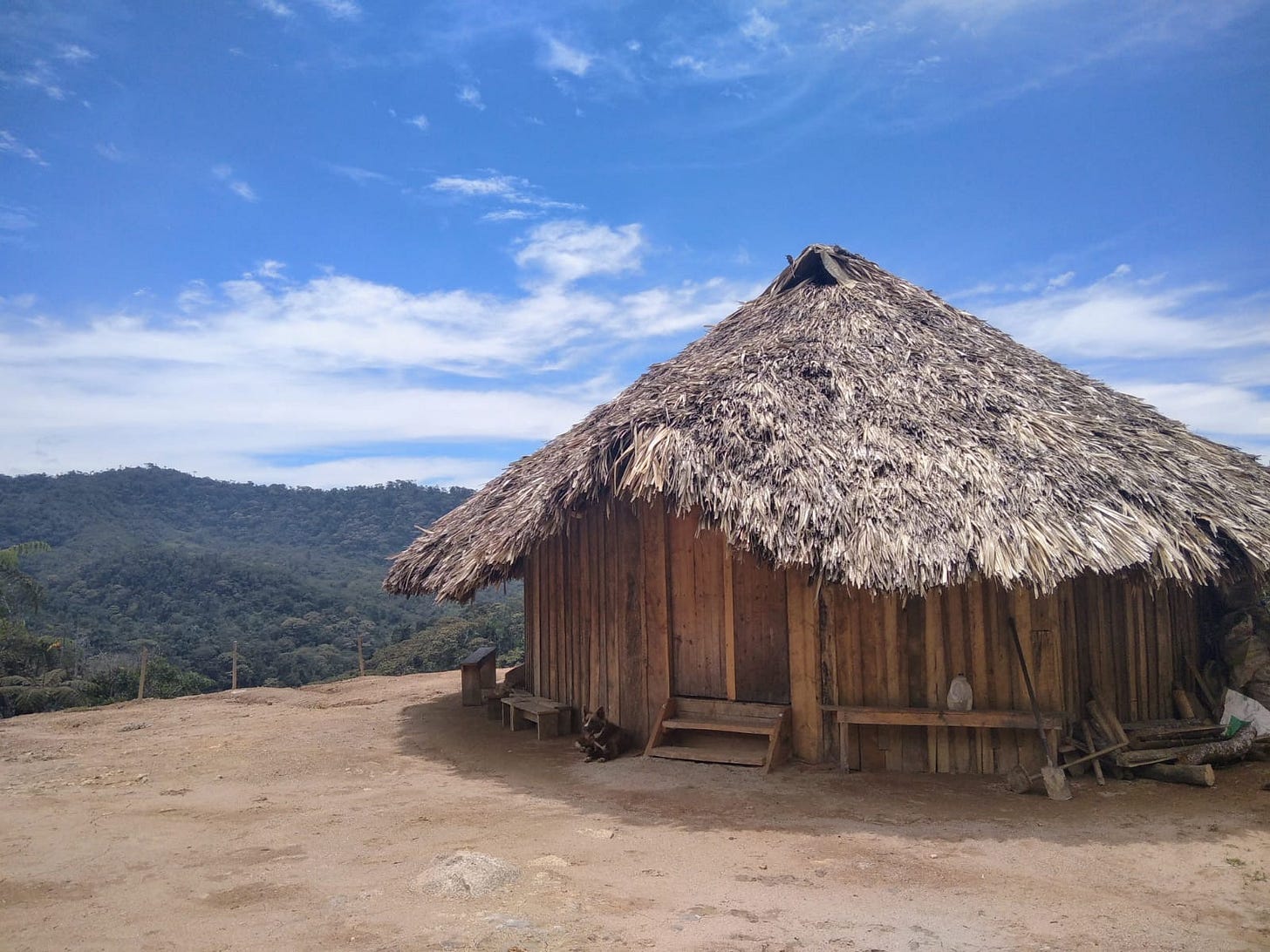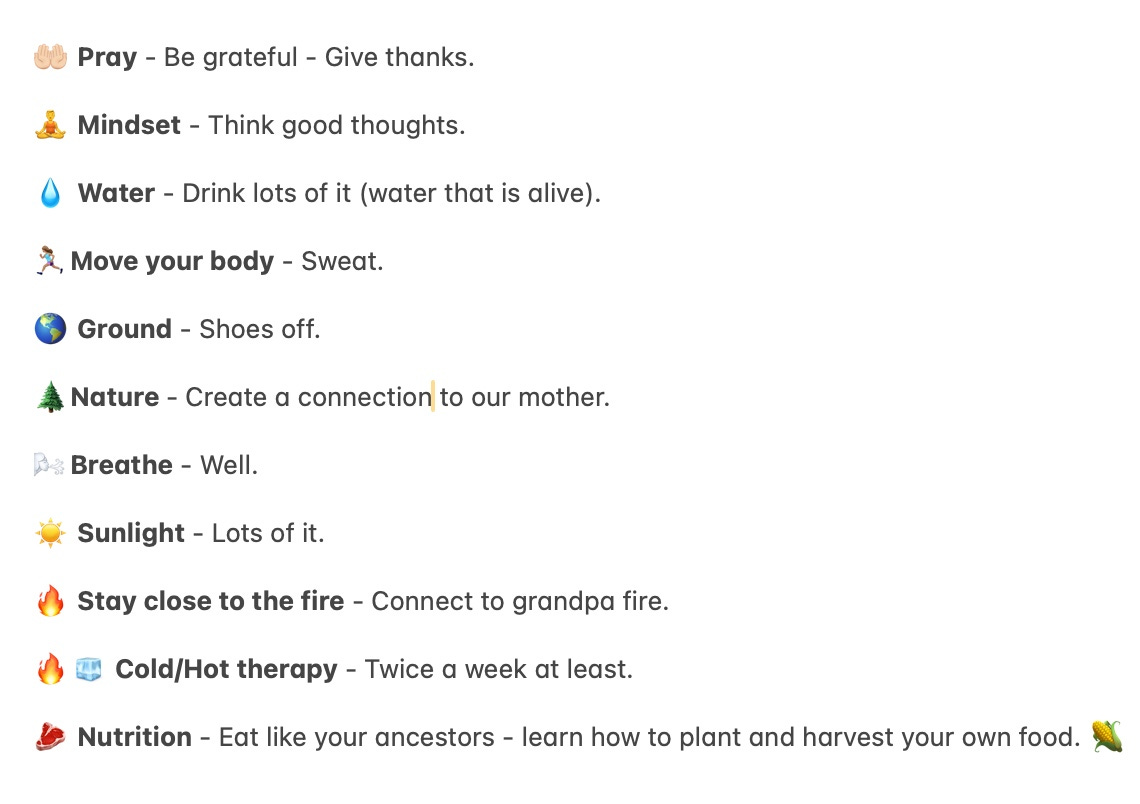🌵From Ceremony to Integration: Lessons in Plant Medicine.
Square pegs don't fit in round holes.
It’s 5 am in the Colombian Andes, and we are closing out a wild Yagé (Ayahuasca) ceremony. Everyone has been rocked. First light is coming through the maloka's weathered boards as I am approached by the Taita (medicine man). He looks at me with one of his jaguar stares. “It’s your turn,” he says in Spanish. For the last hour, the two Taitas have been blessing, hitting, and cleaning the ceremonial participants with ortiga (stinging nettles). I am sitting by the fire. I look up at him; he’s pissed at me for something, but he is smiling. I say in Spanish, “My turn for what?” He’s holding the ortiga in his hand. I am the last one to receive a fiery blessing from the plant kingdom.
As I stand up, he turns to me and says, “Take your shirt off.” Reluctantly, I am sitting there on a small wood stool, the cold damp air flowing through the cracks in the floorboards. I receive the fiery medicine from head to toe. Good morning! My whole body is on fire. I say to myself, “Aguante marina,” our inner circle catchphrase meaning “put up with it!” The cleanse lasts around ten minutes. Every nettle I can feel the spines on its leaves hitting my skin, leaving large red welts.
Everyone begins to stir from their slumber, and we close out the ceremony. I immediately go outside and find myself a bucket of the coldest rainwater you will find at 9,000 feet above sea level. I strip off and ice my body (a common practice in the jungle is to receive an ortiga treatment and then stand under a waterfall to receive the cold water and all its benefits). I look back on that experience now and give thanks to the fact that I had teachers who were tough but fair. That part of the integration process was a little different from what we may find online today.
The Indigenous way of life.
The indigenous mindset around the use of plant medicine is that it is a way of life. The plants and ceremonies are tools to tackle the real ceremony that is life. It is to gain strength to have a strong mind, a strong body, and a strong spirit, to enforce a stronger relationship with Mother Earth, your family, and most importantly, to pray and establish/maintain a connection with the Creator.
Prayer, for some, may seem like an unusual concept, but it is about creating a space or connection with a higher force or the spiritual environment that is around us. In that way, we call forward our ability to be strong, to be in prayerful movement throughout life, to be humble, and to be in gratitude for life itself and everything that life has given us and continues to give us.
In 2024, plant medicine integration or psychedelic integration is thrown around all too lightly by people who, quite frankly, have not done the work or lack the personal experiences or connection to the plants or alliances with indigenous groups and healers.
Then you have Western psychologists looking into ways they can fit Carl Jung into a cup of Ayahuasca. The square peg cannot fit into a circular hole. They are two completely different things, two completely different worlds.
These misconceptions are evident in the square rooms and books, and on the square beds. Yes, maybe they have their place, but they are nothing near the tradition, lineage, lore, song lines, ancestral healing, spirit world, in the circular Malokas, circular Tipis, in the circle of life, sitting on the earth, on our mother earth.
When we venture into the jungles, deserts, or high Andes regions to seek out these plants, medicines, and healers, we do not find ourselves sitting down in a maloka in the middle of Cusco or Bogota, but in the mountains, in the jungle… in nature. In our natural environment. Understand that nature is the key.
Our lives can be very much turned upside down upon returning from these experiences with the plants and traditional culture because we usually return to a place with limited culture, where the closest connection to nature we have is a small patch of grass that we choose to acknowledge on a Sunday morning. We are setting ourselves up for disappointment. We aren’t going to integrate an explosive connection to spirit through colouring in mandalas or pulling tarot cards on our bed at 8 pm on a Wednesday.
The Ideal Integration Checklist.
Just like the plants, integration does not have to be complicated. The answers will come when they need to come. Move your body, move your mind, and move your spirit. Trust in the medicine, in your connection to the Creator, and your own ability to safely navigate the teachings that have been presented to you by the medicine.
… and don’t forget to “Pensar Bonito” (Think Beautifully).
Integration is taking responsibility for your life and being tough about it. Getting up every morning with a clear mindset of appreciation for life itself.
In our exploration of plant medicine, it becomes evident that to understand the different ways in which we can use integration, we need to engage with and liaise with the rich traditions of indigenous elders and healers.
While Western medical education contributes valuable insights into certain integration processes, it's crucial to recognise the limitations of a purely academic approach. Plant medicine experiences elude rational mind-based explanations. These mysteries call for a deeper connection with the traditions and indigenous groups from which the plant comes, natural lore, and the plant’s natural environments. In the words of indigenous elders, you will never truely rationally understand the plants.
If you want to know more about integration with master plants, check out my Plant Medicine Integration Master Class.
Use the following discount code for 20% off: TWOL01





